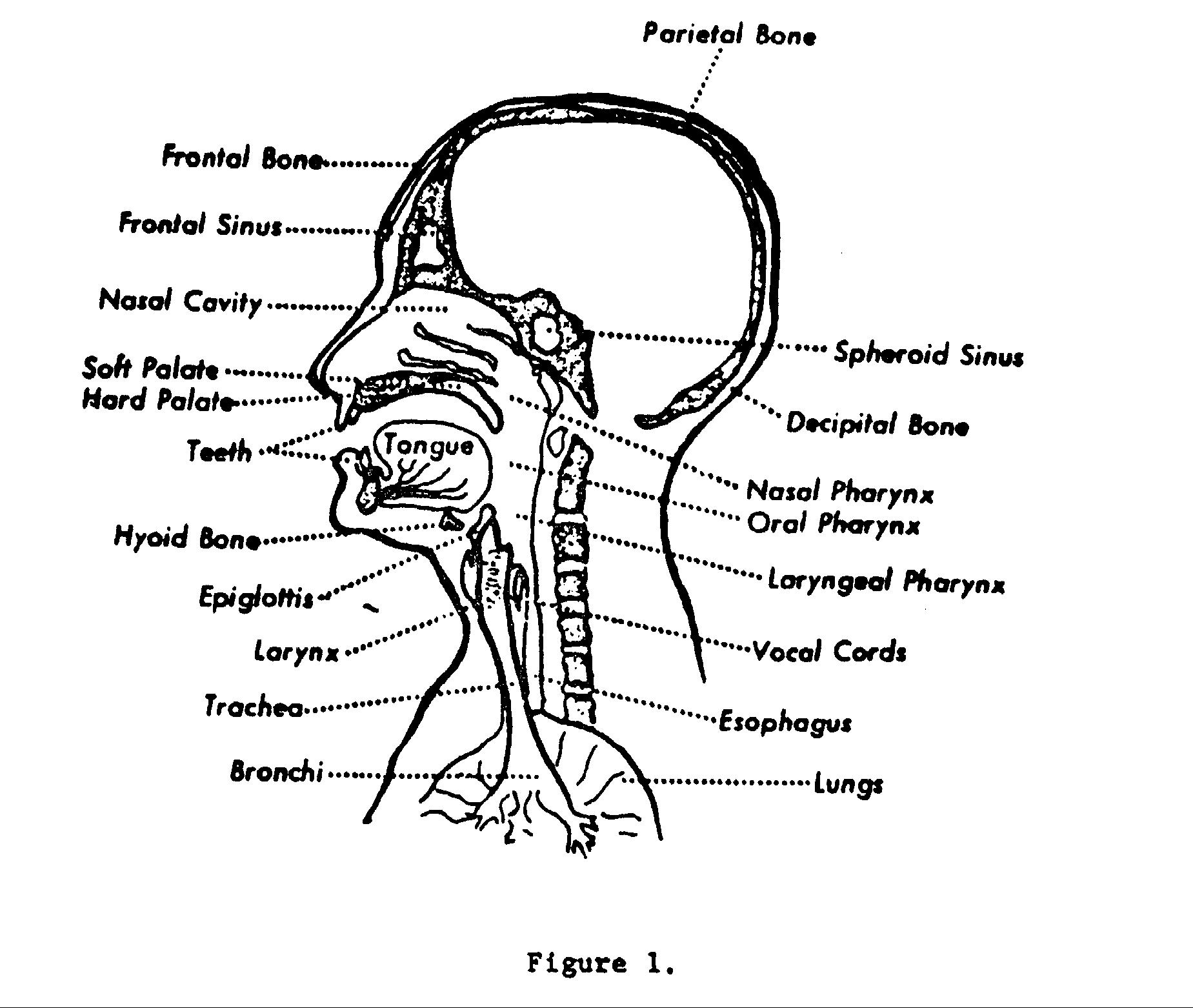Singing In Tune
by Fred King, international coach(from Dundalk Md Charivari, Tom Wheatley, editor)
Chapter 2
Assuming the quartet started on pitch and energized enough to prevent flatting, let's go on to the next step. This is correct voice production. Incorrect tone quality and production can block the hearing so that a singer is unaware of singing flat. This is a real biggie in the inexperienced chorus or quartet man.
The first step in correcting the faulty tone is to have the singers open the resonators so that the tone will be supported by the breath. Let's backtrack a minute and talk about resonance and the location of the resonators. Resonance is the amplification and enrichment of a fundamental tone emanation from the larynx. The resonators are the pharynx, mouth and nasal cavities. (Some authorities also consider the apranasal sinuses, the trachea, the bronchi and the chest cavity to be part of the resonating system.) These are shown in Figure 1. They are located on each side and above the vocal cords (or more correctly vocal folds) and their job is to amplify the vibrations produced by the vocal cords, and to increase their intensity as they are projected from the larynx. The resonation cavities are divided into two classifications: fixed and adjustable. The nasal cavity is fixed, while the pharynx and the mouth are capable of special use. More on these will be covered in next month's installment.

back to Craft
back to Aids for Bulletin Editors